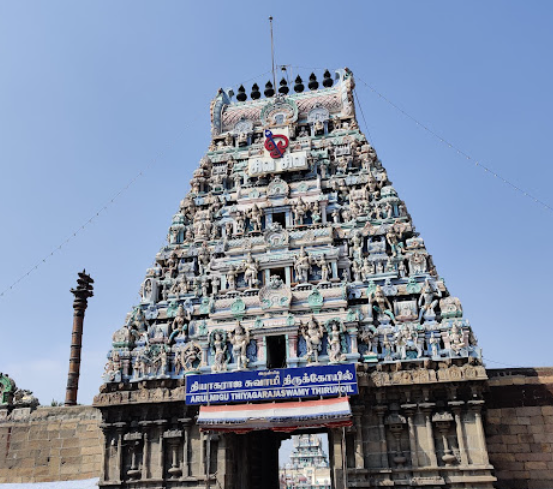Origin/History :-
The Thiruvottiyur Temple, dedicated to Lord Shiva, is believed to have had its origins during the 6th-7th century CE. It was originally constructed during this time, and later, it was reconstructed in 750 CE during the Thondaiman period. In 1936 CE, a major renovation was undertaken by an ardent devotee named Thiruvottiyuran Adimai, who oversaw the project for 14 years and participated in the work every day. Following this renovation, the temple underwent a Kumbhabhishekam in 1936. The temple also saw subsequent Kumbhabhishekams in 1998 and 2013.
According to inscriptions, Thiruvottiyur was part of the Jayangonda Chozha Mandalam, specifically under the Puzhal Kottam, in the region known as Puzhal Nadu. The inscriptions refer to the place as Adipuri, and the Lord Shiva in the temple was known as Adipureeswarar. During the Chozha period, the deity was also called Mahadevabhattaarar, Thiruvotriyur Mahadevar, Otriyur Alwar, Thiruvotriyur Nayanar, and Padampakka Nayakadevar.
The inscriptions further mention various festivals celebrated at the temple, including the Panguni Uthira Thiruvizha, which occurs on the 6th day of the festival with a procession and pooja under the Mahizha Tree, where Sundara’s Sripuranam is staged. Other festivals include Ani Thiruvizha and Masimaha Thiruvizha.
The sanctum adhisthana features inscriptions from the Rajendra Chozha period in Sanskrit, with many inscriptions detailing donations made to the temple for burning lamps. Some inscriptions indicate that the temple had specific conditions for offerings, such as the term “sava moova peradu”, which meant the number of goats offered should never decrease.
The architect/sculptor responsible for the temple’s construction is mentioned as Veera Chozha Ravi Thachan. One inscription records the case of an officer, called “Shiva Thuroki”, who failed to collect taxes on the temple’s property. As a result, his property was confiscated and given to the temple. Another inscription mentions a tax of 15% interest in gold to be collected every six months, along with provisions for the tax collector’s food.
On the right side wall (behind the right side dwarapalaka), there is an inscription regarding the distribution of land to 10 people, who staged the life story of Sundarar in the presence of Sathuranthantha Pandithar, Vasika Pandithar, Soma Siddhanatha Pandithar, and Otriyur Battar. The land value was equated to that of land sold at Dhandeeswaram, which is now part of Chennai.
A 960 CE inscription from the Chozha period mentions Valluvanad (a region in present-day Kerala), where King Vallabhan, a friend of Chozha King Rajaditya, was deeply affected by his friend’s death at the hands of Rashtrakooda King Krishnan-III. This led him to abandon worldly pleasures and take on the name Sathuranana Pandithar, becoming the head of the Thiruvottiyur Madam. The Kulasekara King Vijaya Ragadevan is also mentioned in the inscription. Another inscription from Rajendra Chozha I's 31st reign year mentions that Sathuranana Pandithar deposited 150 Kasu for ghee for the temple's worship during the Margazhi Thiruvathirai festival.
The temple was associated with several madams during the Chozha period, including the Sathuranan Pandithar Madam (mentioned in Rajendra I's inscription), the Kulothunga Chozhan Madam, the Rajendra Chozhan Madam (built by Nagalavvaisani, an Arya woman from Mehalapuram in Arya Desam), and the Angarayan Madam (during the reign of Vijayanagara King Harihara II).
This rich history highlights the temple's deep-rooted connection to the Chozha dynasty, its social and cultural significance, and the dedicated efforts made for its preservation and enhancement over centuries.
Puranic Significance :-
